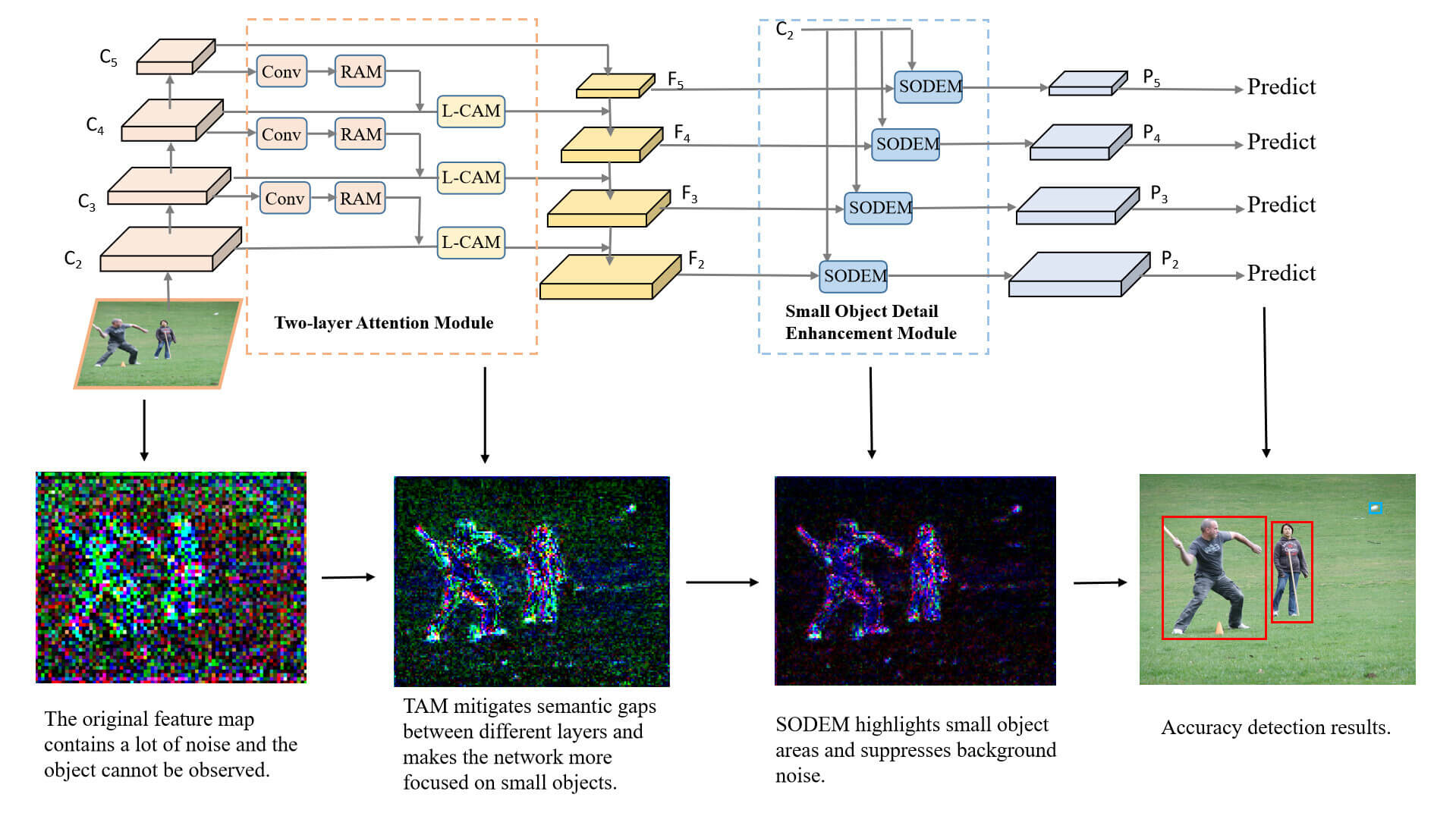 Open Access
Open Access
ARTICLE
Two-Layer Attention Feature Pyramid Network for Small Object Detection
1 College of Information Engineering, Zhejiang University of Technology, Hangzhou, 310023, China
2 Binjiang Cyberspace Security Institute of ZJUT, Hangzhou, 310056, China
* Corresponding Author: Xianbao Wang. Email:
(This article belongs to the Special Issue: Artificial Intelligence Emerging Trends and Sustainable Applications in Image Processing and Computer Vision)
Computer Modeling in Engineering & Sciences 2024, 141(1), 713-731. https://doi.org/10.32604/cmes.2024.052759
Received 14 April 2024; Accepted 06 June 2024; Issue published 20 August 2024
Abstract
Effective small object detection is crucial in various applications including urban intelligent transportation and pedestrian detection. However, small objects are difficult to detect accurately because they contain less information. Many current methods, particularly those based on Feature Pyramid Network (FPN), address this challenge by leveraging multi-scale feature fusion. However, existing FPN-based methods often suffer from inadequate feature fusion due to varying resolutions across different layers, leading to suboptimal small object detection. To address this problem, we propose the Two-layer Attention Feature Pyramid Network (TA-FPN), featuring two key modules: the Two-layer Attention Module (TAM) and the Small Object Detail Enhancement Module (SODEM). TAM uses the attention module to make the network more focused on the semantic information of the object and fuse it to the lower layer, so that each layer contains similar semantic information, to alleviate the problem of small object information being submerged due to semantic gaps between different layers. At the same time, SODEM is introduced to strengthen the local features of the object, suppress background noise, enhance the information details of the small object, and fuse the enhanced features to other feature layers to ensure that each layer is rich in small object information, to improve small object detection accuracy. Our extensive experiments on challenging datasets such as Microsoft Common Objects in Context (MS COCO) and Pattern Analysis Statistical Modelling and Computational Learning, Visual Object Classes (PASCAL VOC) demonstrate the validity of the proposed method. Experimental results show a significant improvement in small object detection accuracy compared to state-of-the-art detectors.Graphic Abstract

Keywords
Cite This Article
 Copyright © 2024 The Author(s). Published by Tech Science Press.
Copyright © 2024 The Author(s). Published by Tech Science Press.This work is licensed under a Creative Commons Attribution 4.0 International License , which permits unrestricted use, distribution, and reproduction in any medium, provided the original work is properly cited.


 Submit a Paper
Submit a Paper Propose a Special lssue
Propose a Special lssue View Full Text
View Full Text Download PDF
Download PDF Downloads
Downloads
 Citation Tools
Citation Tools